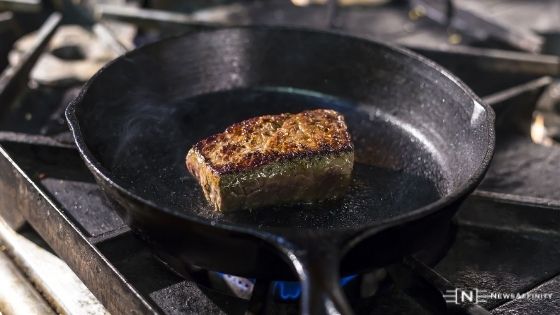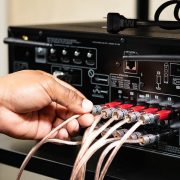Depending on regional nomenclature, many people refer to the griddle pan and frying pan as the same thing. As a matter of fact, they share many of the same purposes. But as you will see in the following article, these two forms of cookware have some subtle differences that you should know about.
The most notable difference between a griddle and a frying pan is shape. Frying pans tend to be round while the griddle pan is rectangular in shape. Typically, the griddle pan also has some elevated ridges along the bottom whereas the frying pan is flat all across.
But these are only the beginnings of the differences between griddle pans and frying pans. In the following article, we will delve deeply into the various ways these two cooking pans differ in function and results.
What Is a Griddle Pan?
A griddle pan is a bit more technical as there is a great variety of griddle pans on the market. Generally speaking, the griddle pan has fewer sides than a frying pan and is used for cooking things that will need to be observed from all sides and flipped to produce an even cooking all the way through. Think eggs, bacon, Canadian ham, steaks, and burgers — even French toast and pancakes.
Typically, griddle pans are made from a material that will resist sticking. A griddle may have a handle or it may not, although those with no handle are typically used in high production kitchens and used for burgers, steaks, etc. Those with handles are better suited to the home kitchen.
Most griddle pans will have a series of ridges along the bottom of the pan that separates the food being cooked from the juices and greases below. This allows fats to be carried away from the foods so that foods are less saturated with grease. This can be perfect for healthier cooking. Griddles are typically heavier as well which makes them better suited to heavy-duty cooking and high-temperature cooking as well.
What Is a Frying Pan?
Frying pans on the other hand is a term used to cover a wider variety of cookware and address a wider category of foods that can be cooked. Frying pans typically have deeper sides and a rounded shape which is better suited to stirring and mixing fried dishes — like stir fry.
Frying pans may be made of steel, aluminum, copper, or cast iron. They are often, but not always, treated with some sort of non-stick surface. Frying pans are designed to spread the oils and juices evenly through the food being cooked and for this reason they have higher sides and a smooth bottom.
Frying pans, despite their name, can make it ill-suited to flip certain types of foods as their high sides make it difficult to cook more than one object at a time. The only exception would be steaks, which actually cook very well in a frying pan because a set of tongs rather than a spatula can be used for flipping the steak.
Frying pans can also be used for cooking scrambled eggs, grilled cheese sandwiches, quesadillas and omelets as their flat surface is well suited to each of these dishes. Frying pans are also a good option for reheating certain foods as well as cooking more delicate foods like fried fish, for example.
Final Comparison of Griddles and Frying Pans
So, as you can see the differences between these two pans is very important to the types of foods you will be cooking. It may seem confusing, but after you have decided what you are trying to cook and how the type of pan you use will work, you will get a better idea of which option to choose.
The griddle pan is the rectangle with the shorter sides and the ridges along the bottom and is best used with high-temperature cooking. Griddle pans also allow the juices to be carried away from the foods and can make cooking with lots of fats a little healthier.
The frying pan is a more versatile cooking implement that can be best used with lower-temperature cooking and has higher sides to keep the juices inside. Frying pans also have lids that can aid in temperature control.

















Comments